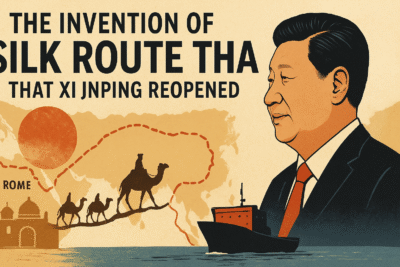
The recent passing of the Maratha reservation bill in the Maharashtra Assembly has reignited a complex debate on affirmative action in India. While the intent to address the perceived socio-economic challenges faced by the Maratha community is understandable, this specific approach raises several concerns and ultimately proves to be the wrong route to achieve advancement.
Seeds of Discontent: A Historical Context
The demand for Maratha reservations did not emerge overnight. It has its roots in the late 20th century, amidst a growing sense of discontent within the community regarding their economic and educational status. Despite their traditional association with a dominant caste, many Marathas began to feel they were falling behind in terms of social mobility and economic prosperity. This perception stemmed from various factors, including:
Shifting economic landscape: The liberalization of the Indian economy in the 1990s led to rapid changes in the job market, favoring individuals with specialized skills and education. Many Marathas, traditionally engaged in agriculture and rural occupations, felt unprepared for these new economic realities.
Educational disparities: While the community boasts a high literacy rate, concerns arose regarding the quality of education received by many Marathas. Limited access to quality higher education institutions and vocational training opportunities were perceived as hindering their employability and career prospects.
Perceived lack of political representation: The rise of other social groups in Maharashtra’s political landscape led to a feeling of marginalization among some Marathas. They felt their concerns were not adequately addressed by the existing political establishment.
These factors collectively contributed to a growing sense of discontent and a demand for affirmative action to bridge the perceived gap in socio-economic opportunities.
A History of Attempts: Navigating Legal Hurdles
The quest for Maratha reservations has been marked by a series of attempts and legal challenges:
2004: The then-government led by Vilasrao Deshmukh established the Maharashtra State Backward Class Commission to examine the social and educational status of the Maratha community. However, the commission’s report faced delays and controversies, further fueling anxieties within the community.
2014: The Congress-NCP government introduced a quota bill, proposing a 16% reservation for Marathas in education and government jobs. However, the Bombay High Court stayed the implementation due to legal challenges citing concerns about exceeding the 50% reservation limit and the lack of empirical evidence to establish the community’s backwardness.
2018: The Devendra Fadnavis government passed the Maharashtra State Reservation for Socially and Educationally Backward Classes (SEBC) Act, granting 16% reservation to Marathas. This act was challenged in the Supreme Court, which, in a landmark judgment in 2021, declared it unconstitutional. The court cited exceeding the reservation limit and insufficient data to prove the community’s backwardness as reasons for striking down the act.
February 20, 2024: The current bill, proposing a 10% quota, attempts to navigate these legal hurdles by staying within the 50% limit. However, its future remains uncertain, with the possibility of further legal challenges and the ongoing curative petition in the Supreme Court.
This history of attempts highlights the complex legal and social landscape surrounding Maratha reservations.
Problems with the Quota Approach: Beyond Good Intentions
While the Maratha reservation bill seeks to address perceived social and economic inequalities, it presents several significant problems:
Exceeding the Reservation Limit: The bill pushes the total reservation quota in Maharashtra beyond the 50% limit set by the Supreme Court. This raises concerns about meritocracy and potential discrimination against other communities who already face limited opportunities due to existing reservations.
Lack of Empirical Evidence: Critics argue that the bill lacks sufficient data to establish the widespread backwardness of the Maratha community. The justification for this specific quota remains questionable in the absence of robust evidence demonstrating their socio-economic disadvantages.
Potential for Misuse: Reservation benefits might not reach the most deserving individuals within the community. There is a risk that quotas could be misused for personal gain or perpetuate existing inequalities within the Marathas themselves, with wealthier and more privileged individuals potentially benefiting disproportionately.
Perpetuating Caste-Based Divisions: Focusing solely on caste-based reservations can hinder efforts towards building a more inclusive and meritocratic society. It risks reinforcing existing social divisions and potentially creating resentment among other communities who feel they are being unfairly disadvantaged.
These problems highlight the limitations of the quota approach and raise questions about its effectiveness in achieving genuine social and economic advancement for the Maratha community.
Alternative Paths to Advancement: Beyond Quotas
Instead of relying solely on reservations, a more sustainable and holistic approach is needed to address the challenges faced by the Maratha community. This could include:
- Investment in Education and Skill Development:
Providing quality education and vocational training opportunities can equip individuals with the skills and knowledge needed to compete in the job market, irrespective of their caste background. This could involve:
Improving the quality of government schools: Investing in infrastructure, teacher training, and curriculum development can ensure Maratha students receive a strong foundation in education.
Promoting access to higher education: Expanding scholarship programs and financial aid initiatives can make higher education more accessible for deserving Maratha students.
Enhancing vocational training opportunities: Establishing skill development centers and collaborating with industries to provide job-oriented training programs can equip Marathas with relevant skills for the current job market.
- Entrepreneurship Promotion:
Encouraging and supporting Maratha entrepreneurs through targeted initiatives can foster economic self-reliance and create employment opportunities within the community. This could involve:
Providing access to microfinance and loans: Facilitating access to capital through government schemes and financial institutions can help Marathas establish and grow their businesses.
Offering business incubation and mentorship programs: Providing guidance and support from experienced entrepreneurs can equip Maratha individuals with the necessary skills and knowledge to navigate the business landscape.
Creating market linkages: Connecting Maratha entrepreneurs with potential customers and markets can help them expand their reach and achieve sustainable growth.
- Financial Inclusion:
Implementing targeted financial schemes and social welfare programs can directly address economic disparities and empower individuals from disadvantaged backgrounds within the Maratha community. This could involve:
Expanding social security schemes: Ensuring access to healthcare, pensions, and other social security benefits can provide a safety net for vulnerable individuals and families.
Promoting financial literacy: Educating individuals about managing their finances effectively can help them make informed decisions and improve their financial well-being.
Providing targeted subsidies and assistance: Implementing programs that address specific needs, such as housing assistance or agricultural subsidies, can alleviate financial burdens and promote economic stability.
- Addressing Underlying Issues:
Investigating the root causes of perceived backwardness, such as lack of access to quality education, healthcare, and infrastructure, can provide long-term solutions beyond temporary quotas. This could involve:
Improving rural infrastructure: Investing in roads, transportation, and communication networks can enhance connectivity and access to essential services in rural areas where many Marathas reside.
Enhancing healthcare facilities: Expanding access to quality healthcare services in rural areas can address health disparities and improve overall well-being within the community.
Promoting social reforms: Addressing issues like gender inequality and discriminatory practices within the community can create a more equitable and just environment for all members.
Conclusion: A Call for a Multi-pronged Approach
The Maratha reservation bill, while well-intentioned, ultimately undermines the very goals it seeks to achieve. By perpetuating a system based on caste, it risks further dividing society and hinders the pursuit of a truly equitable and just society.
Investing in education, skill development, and targeted social programs offers a more sustainable and inclusive path towards empowering not just the Maratha community, but all disadvantaged groups in Maharashtra and beyond. Only by moving beyond quota-based solutions and adopting a multi-pronged approach that addresses the root causes of social and economic disparities can we truly pave the way for a brighter future for all.





